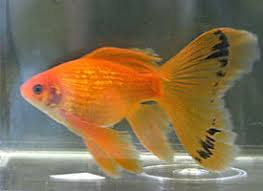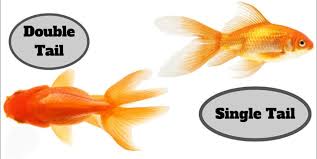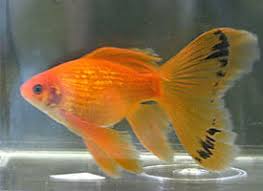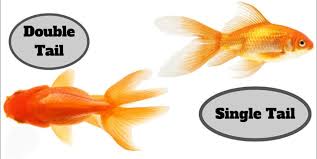Elevate Pet Supply
ASSORTED GOLDFISH (Mix of Straight-Tail Varieties)
ASSORTED GOLDFISH (Mix of Straight-Tail Varieties)
Couldn't load pickup availability
Straight Tail Goldfish
Straight tail goldfish—also known as single-tailed goldfish—are the more streamlined, hardy cousins of the fancy goldfish varieties. They’re often the ones people picture when they think of a classic goldfish swimming in a bowl (though they really prefer a spacious tank or pond!).
Here are some of the most popular types:
- Common Goldfish: The OG of goldfish. Sleek, torpedo-shaped body with a short, single tail. They come in orange, red, white, and even black. Hardy and great for beginners.
- Comet Goldfish: Similar to the common goldfish but with a longer, deeply forked tail. They’re fast swimmers and love room to roam.
- Shubunkin: These beauties have a calico pattern—think blue, orange, black, and white splotches—and a single tail. There are three types: American (long tail), London (short tail), and Bristol (heart-shaped tail).
- Wakin: A bit of a hybrid—technically double-tailed but with a straight-bodied shape. They’re often mistaken for koi and do well in ponds.
- Jikin: Rare and elegant, with a white body and red fins. Their tail spreads out in an “X” shape when viewed from behind.
- Watonai: A long-tailed variety that’s a cross between Wakin and Comet goldfish. They’re graceful swimmers with flowing fins.
Straight tail goldfish are generally hardier and more active than fancy goldfish, making them ideal for outdoor ponds or larger aquariums. They can grow surprisingly large—up to 12 inches or more—and live for decades with proper care.
Tank & Space
- Size matters: Start with at least 30 gallons for one goldfish, and add 12 gallons per additional fish. These guys can grow over a foot long!
- Shape over height: Long, horizontal tanks are better than tall ones—they need room to swim.
Water Quality
- Filtration is essential: Use a strong filter rated for at least 4x the tank volume per hour. Goldfish are messy!
- Weekly water changes: Replace 25–30% of the water weekly to keep ammonia and nitrate levels in check.
- Test the water: Aim for pH 6.5–7.5, ammonia and nitrite at 0, and nitrate under 20 ppm
Temperature & Lighting
- Cool water fish: Keep temps between 65–75°F (18–24°C). No heater needed unless your home gets chilly.
- Lighting: Provide 8–12 hours of light daily to support their circadian rhythm and color vibrancy.
Diet
- Variety is key: Feed a mix of high-quality pellets, vegetables (like shelled peas or spinach), and occasional protein (like bloodworms or brine shrimp).
- Don’t overfeed: Only give what they can eat in 1–2 minutes, once or twice a day.
Substrate & Decor
- Safe substrate: Use large gravel or sand to avoid choking hazards.
- Minimal decor: Leave open space for swimming. Avoid sharp edges that could tear fins.
Enrichment & Companionship
- Social fish: They enjoy company—just stick to other single-tailed goldfish to avoid bullying.
- Enrichment: Rearranging decor or adding floating toys can keep them mentally stimulated.
Straight tail goldfish are generally hardy, but they’re not invincible. Here are some common health issues to keep an eye on:
Buoyancy Disorders
- Symptoms: Floating upside down, sinking, or struggling to maintain balance.
- Causes: Overfeeding, gulping air at the surface, or swim bladder issues.
- Prevention: Feed sinking pellets and include fiber-rich veggies like peas.
Parasites
- Symptoms: Flashing (rubbing against objects), clamped fins, lethargy, visible worms or lice.
- Common culprits: Ich (white spots), flukes, anchor worms.
- Prevention: Quarantine new fish and plants before adding them to your tank.
Poor Water Quality–Related Illnesses
- Symptoms: Red or inflamed gills, gasping at the surface, fin rot, ulcers.
- Conditions: Ammonia burns, nitrite/nitrate poisoning, bacterial infections.
- Prevention: Regular water testing, strong filtration, and weekly water changes.
Fungal & Bacterial Infections
- Symptoms: Cottony patches, cloudy eyes, frayed fins, open sores.
- Examples: Fin rot, columnaris, dropsy.
- Prevention: Clean tank, avoid overcrowding, and treat injuries promptly.
Tumors & Growths
- Symptoms: Lumps or warts (often benign neurofibromas).
- Note: Usually harmless unless they interfere with swimming or eating.
Temperature Stress
- Symptoms: Lethargy, loss of appetite, weakened immunity.
- Prevention: Keep water between 65–75°F (18–24°C) and avoid sudden changes.
The best defense? Clean water, a balanced diet, and observation. If your goldfish starts acting “off,” it’s often a sign something’s wrong. Want a checklist of symptoms to watch for or a mini first-aid kit guide?
Poor Water Quality–Related Illnesses
- Symptoms: Red or inflamed gills, gasping at the surface, fin rot, ulcers.
- Conditions: Ammonia burns, nitrite/nitrate poisoning, bacterial infections.
- Prevention: Regular water testing, strong filtration, and weekly water changes.
Fungal & Bacterial Infections
- Symptoms: Cottony patches, cloudy eyes, frayed fins, open sores.
- Examples: Fin rot, columnaris, dropsy.
- Prevention: Clean tank, avoid overcrowding, and treat injuries promptly.
Tumors & Growths
- Symptoms: Lumps or warts (often benign neurofibromas).
- Note: Usually harmless unless they interfere with swimming or eating.
Temperature Stress
- Symptoms: Lethargy, loss of appetite, weakened immunity.
- Prevention: Keep water between 65–75°F (18–24°C) and avoid sudden changes.
The best defense? Clean water, a balanced diet, and observation. If your goldfish starts acting “off,” it’s often a sign something’s wrong.




